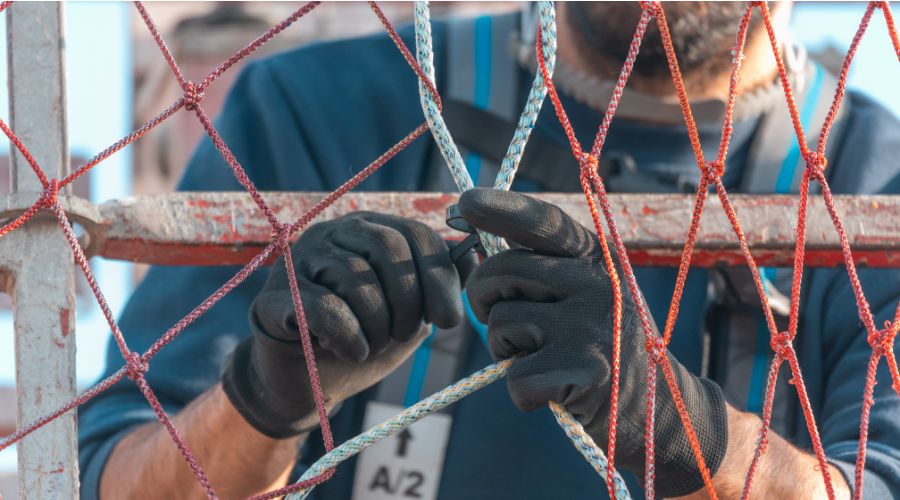Climbing cargo nets are more than just functional gear—they’re an essential part of playgrounds, military training courses, obstacle challenges, and gym workouts. Whether you’re running a commercial facility or managing outdoor recreational spaces, your investment in a climbing cargo net should be long-lasting and safe for all users. Unfortunately, exposure to the elements, poor installation, or neglect can shorten a net’s usable life. The good news? With the right care, you can significantly extend your net’s lifespan, saving both time and money.
This guide will walk you through practical steps to ensure your climbing cargo net remains in top shape for years to come.
Start with the Right Material
The foundation of a durable net lies in its material. Not all climbing cargo nets are built the same, and the type of rope used plays a huge role in how long it will last.
Material Types to Consider:
- Natural Fiber (e.g., manila, jute): Offers great grip but susceptible to rot and mold, especially outdoors.
- Synthetic Fiber (e.g., nylon, polyester): Superior resistance to UV light, mildew, and stretching.
- High-Tech Options (e.g., Kevlar blends): Used in military or high-load environments due to extreme durability.
When choosing your climbing cargo net, opt for synthetic materials if it will be installed outdoors or in high-moisture environments. Natural fibers are better suited for indoor, aesthetic, or light-use applications.
Read also :- How to Inspect Your Climbing Cargo Net for Damage or Wear
Follow Smart Installation Techniques
Incorrect installation is a common cause of premature wear. A climbing cargo net under constant uneven tension or rubbing against sharp edges won’t last long.
Make sure to:
- Use galvanized or stainless-steel anchor hardware to avoid rust.
- Distribute the net’s weight evenly during mounting.
- Avoid attaching the net to sharp or abrasive surfaces—use protective sleeves or buffers.
- Maintain proper spacing from the ground to avoid dragging and fraying.
Proper installation not only improves longevity but also ensures user safety and net performance.
Partner with Trusted Net Providers
Choosing a net from a trusted supplier means you’re already one step ahead in terms of durability and support. Nets Depot Inc provides premium climbing cargo nets built with commercial-grade materials that meet the needs of gyms, schools, obstacle course designers, and military professionals.
By sourcing your net from Nets Depot Inc, you’re not just buying a product—you’re investing in safety, performance, and long-term value.
Stick to a Routine Inspection Schedule
Even the toughest cargo net needs regular inspection. Over time, exposure to the sun, rain, and daily use can degrade the fibers, sometimes in ways that aren’t obvious until it’s too late.
What to Inspect:
- Fraying, unraveling, or fuzzy fibers
- Knots that have loosened or shifted
- Areas of excessive stretching or sagging
- Discoloration, particularly from UV exposure
- Presence of mildew or mold, especially near anchors
Create a monthly or bi-weekly inspection checklist. If your climbing cargo net is used in high-traffic or professional training settings, increase the frequency of checks.
Clean Your Net Properly and Consistently
Cleaning is one of the most overlooked yet important steps in net maintenance. Dirt, sweat, oils, and moisture all contribute to material breakdown—especially in natural rope.
How to Clean Your Climbing Cargo Net:
- Use lukewarm water and mild, pH-neutral soap.
- Avoid bleach, which weakens rope fibers over time.
- Gently scrub problem areas with a soft-bristled brush.
- Air-dry completely in a shaded, well-ventilated area.
Never use high-pressure hoses or machine dryers, and don’t leave the net to dry in direct sunlight, as UV rays can degrade both synthetic and natural ropes over time.
Read also :- 7 Reasons Why Every Camper Needs a Climbing Cargo net
Protect It from the Elements
Outdoor climbing cargo nets take a beating from nature. Whether it’s UV rays in summer or freezing temperatures in winter, the environment can significantly shorten your net’s lifespan if precautions aren’t taken.
Weather Protection Tips:
- Apply UV-protectant sprays on synthetic nets annually.
- Cover nets with breathable waterproof tarps when not in use.
- In snowy climates, remove and store nets indoors during the off-season.
- For playgrounds or public parks, consider installing shade canopies above the net.
Taking a few preventative steps can help keep your climbing cargo net functioning and looking great through every season.
Educate Users on Safe Practices
Even the best-made nets won’t last if they’re misused. Most net damage occurs due to improper use—people jumping or swinging on them, exceeding weight limits, or yanking at the mesh.
Help users preserve your equipment by:
- Installing signage with weight limits and usage rules.
- Training instructors or staff to monitor and guide users.
- Dividing net access by age group or activity level.
- Rotating sections of the net periodically to even out wear.
You can also use your Google listing to share updated usage instructions or seasonal care tips for your facility—helpful for clients or members looking for guidance on-site.
Know When to Repair—and When to Replace
All nets wear out eventually. But not all damage requires a full replacement. If you notice localized wear or small tears, there are steps you can take to restore the net before it becomes unsafe.
When Repair Works:
- Minor fraying at anchor points
- A single damaged knot or cord that can be replaced
- General slack that can be retensioned
When It’s Time to Replace:
- Visible signs of dry rot or mold
- Major fiber breakdown throughout the structure
- Stretched sections that won’t return to shape
- Safety compliance issues for commercial use
Consider using professional rope repair kits or contacting your supplier for guidance. Nets Depot Inc also provides replacement parts and accessories for long-term upkeep.
Read also :- Uses for Climbing Cargo Nets in Training and Play
Store Properly When Not in Use
Proper storage is crucial, especially if your net is seasonal or only used for special events.
Storage Tips:
- Coil the net loosely and place it in a breathable mesh bag.
- Keep it in a dry, indoor area away from direct sunlight and temperature extremes.
- Never store the net while wet—ensure it’s fully dry to prevent mold and fiber breakdown.
- Avoid placing heavy objects on top of stored nets to prevent deformation.
Investing in quality storage practices helps your net maintain its shape and strength for years to come.
Contact Us
Looking for durable, weather-resistant climbing cargo nets for your facility? Or do you need guidance on how to maintain your current net? Nets Depot Inc is here to help.
Our team is ready to assist with product recommendations, installation advice, and professional maintenance support. We provide commercial-grade cargo nets designed to meet the unique needs of gyms, schools, military training, and obstacle courses.
Reach out to us today for personalized solutions!
Conclusion
A climbing cargo net is more than just a piece of equipment—it’s a safety-critical structure that demands proper care. With thoughtful material selection, smart installation, consistent inspections, and preventative maintenance, your net can last for years without compromising performance or safety.
From gyms and military courses to school playgrounds and ninja warrior setups, extending the lifespan of your climbing cargo net helps you protect your investment and your users. Follow these expert-backed tips and enjoy long-term value and reliability.
Frequently Asked Questions
Q1. How long does a climbing cargo net last?
Ans. The lifespan of a climbing cargo net depends on several factors, including the material, installation, and maintenance. Typically, a well-maintained synthetic rope net can last 5–10 years in moderate conditions, while natural fiber nets may need to be replaced more frequently due to weather exposure. Regular inspections and proper storage can significantly extend your net’s lifespan.
Q2. Can a climbing cargo net be used outdoors year-round?
Ans. Yes, but only if it is made from weather-resistant materials such as nylon or polyester. If your climbing cargo net is constructed from natural fibers like manila or jute, it’s advisable to remove it during harsh weather, especially during winter months when moisture can freeze and cause the fibers to degrade. Protecting the net with a tarp or applying UV-resistant coatings can also help.
Q3. How do I clean my climbing cargo net?
Ans. To clean your climbing cargo net, use mild, pH-neutral soap and lukewarm water. Avoid harsh chemicals like bleach, which can damage the fibers. Gently scrub the net with a soft brush and allow it to air dry in a shaded, well-ventilated area. Regular cleaning removes dirt, sweat, and moisture, which can otherwise lead to wear and mildew.
Q4. Can I repair a damaged climbing cargo net myself?
Ans. Yes, minor damage like loose knots or frayed edges can be repaired using heavy-duty rope or repair kits. However, if the damage is extensive (such as significant fiber breakdown or major stretching), it’s best to consult a professional or replace the net to ensure safety. If you’re unsure, reach out to your net supplier, like Nets Depot Inc, for guidance.
Q5. How can I protect my climbing cargo net from UV damage?
Ans. UV damage can weaken the fibers of your climbing cargo net, especially if it’s left exposed to sunlight for prolonged periods. To protect against this, you can apply a UV-resistant spray specifically designed for synthetic ropes. Additionally, consider covering the net when it’s not in use, or if possible, install it in a shaded area to limit direct sunlight exposure.






